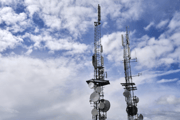How can you tell if hosting the Olympics or Commonwealth games offers value for money? Here are our expert tips
- Replies 5
Victorian Premier Dan Andrews’ decision to back out of a commitment to host the 2026 Commonwealth Games because it might cost A$6 billion to $7 billion that did “not represent value for money” raises the question: is it even possible to work out the costs and benefits of such major events?
It’s a question still hanging over Brisbane’s plans for the 2032 Olympics.
Except in extreme cases – such as the 1976 Montreal Olympics, which is widely regarded as a financial disaster – comparing the costs and benefits of events such as the Commonwealth and Olympic Games is anything but straightforward.
Often economic studies are carried out before the events to build the case for hosting them. In the lead-up to the 2000 Sydney Olympics, a study prepared for the New South Wales government by the consulting firm KPMG pointed to benefits topping $7 billion.
But after the event, when much more information is in, official studies are rare.
Our study found the 2000 Olympics reduced Australia’s real private and public consumption by about $3.7 billion (adjusted to 2023 dollars) over the nine years in which the Olympics impacted the economy.
It is often claimed that hosting the Olympics brings intangible benefits to the host nation – things such as national pride and social cohesion.
Our modelling didn’t take these into account. There’s no doubt there were some, but they came at a substantial price.
It’s important to use a model equipped for the task, and to properly simulate the effect of the event.
In the past, major event studies – such as KPMG’s pre-Sydney Olympics study – used input-output models.
But they have limitations. These include assuming there is unlimited labour and capital available at fixed prices – meaning they often generate unrealistically large benefits.
A better way to assess the economy-wide effects of an event is to use a computable general equilibrium (CGE) model of the kind we used to study the Olympics after it was over.

Central to CGE modelling are supply constraints and price-responsive behaviour, features missing from input-output models.
Modern CGE models track deviations from what would have otherwise happened, as the effects of an event work their way through the economy.
Correctly setting up a simulation to properly capture the economics of an event is important. For instance, past studies have often failed to include all of the costs of the event, such as diverting public services away from their usual uses.
Studies undertaken before the event often include predicted legacies, such as a large boost to tourism following the event.
These are rarely supported by post-event studies. Our study found no evidence the Sydney Olympics produced a boost in post-event international tourism.
But our post-event modelling showed that once the direct effects of the Olympics worked their way through the economy, they caused a reduction of about $3.7 billion (again in 2023 dollars) in Australia’s real private and public consumption, relative to the base-case forecast over the nine years from 1997-98 to 2005-06.
A frequent claim by proponents of big events is that the demand stimulus from the event will far offset its net direct cost. But our real consumption result indicates the demand stimulus offset only about a fifth of the net direct cost.
Unsurprisingly, the loss fell almost entirely on NSW households.
But while hosting the Olympics cut real consumption in NSW, that doesn’t automatically mean it wasn’t value for money.
The loss in real consumption (including forgone public services) of $3.7 billion works out at about $1,440 per NSW household at today’s prices, given the population at the time.
That is a sizeable figure to pay for the intangible benefits not already counted in the prices of tickets, broadcasting rights and other organising committee sales.
However, those intangible benefits – including national and sporting pride, a feelgood atmosphere and inspiring children – might also be sizeable.
There are no estimates for the value of intangible benefits from the Sydney Olympics. However, a 2008 UK study found Britons would have been willing to pay almost £2 billion for the net intangible benefits thought to arise from hosting the 2012 Olympics.
Converting to 2023 Australian dollars, that’s A$230 per UK household. Londoners were found to be willing to pay a higher amount, about A$440 per household.
It may be that NSW households were willing to pay as much as their London counterparts for intangible benefits from hosting a Summer Olympics – maybe much more.
However, it’s difficult to see NSW households willing to pay enough to match what we worked out to be the real consumption cost of $1,440 per head.
The UK study showed households outside London also perceived intangible benefits, though only half as much per household as their London counterparts.
This suggests some greater spreading of the financing burden across Australia might be fairer, which would reduce the average cost to NSW households – but not enough to bring it down to the willingness to pay.
And in any event, assessing how to spread costs in line with the geographical diversity in willingness to pay would be extremely problematic.
For an event to have the best chance of representing value for money for the host, it should require little government support, generate large foreign interest and have large intangible benefits.
Events with wide appeal can generate enough revenue to cover their operating costs – and this was the case for the Sydney Olympics. But they still have to rely on sizeable government support for infrastructure.
Hosts using suitable existing venues therefore have an advantage. New venues are unlikely to provide a post-event legacy and often require substantial ongoing government support to continue to operate.
The most important lesson is that bidders for such events ought to conduct a rigorous analysis of the event’s expected net value before submitting their bids.
Ideally, this would involve an independent expert CGE study. If intangible benefits are to be considered, a separate study should be undertaken to properly estimate the intangibles’ value to residents of the host city and the rest of the nation.
Moreover, bidders ought to make all of the costs known, with no part of arrangements shielded from scrutiny under the veil of “commercial-in-confidence”.
Some mega events might pay their way, when intangibles such as the feelings they engender are taken into account. But the existence of intangibles doesn’t automatically mean they will. The evidence so far suggests they are unlikely to.
This article was first published on The Conversation, and was written by John Madden, Emeritus Professor, Centre of Policy Studies, Victoria University
It’s a question still hanging over Brisbane’s plans for the 2032 Olympics.
Except in extreme cases – such as the 1976 Montreal Olympics, which is widely regarded as a financial disaster – comparing the costs and benefits of events such as the Commonwealth and Olympic Games is anything but straightforward.
Often economic studies are carried out before the events to build the case for hosting them. In the lead-up to the 2000 Sydney Olympics, a study prepared for the New South Wales government by the consulting firm KPMG pointed to benefits topping $7 billion.
But after the event, when much more information is in, official studies are rare.
The Sydney Olympics’ $3.7 billion cost
A decade after the Sydney Olympics, James Giesecke and I attempted to fill the gap using an economic model developed by the Centre of Policy Studies and the data that arrived in the subsequent years to examine what the games changed.Our study found the 2000 Olympics reduced Australia’s real private and public consumption by about $3.7 billion (adjusted to 2023 dollars) over the nine years in which the Olympics impacted the economy.
It is often claimed that hosting the Olympics brings intangible benefits to the host nation – things such as national pride and social cohesion.
Our modelling didn’t take these into account. There’s no doubt there were some, but they came at a substantial price.
How to calculate the value of a mega event
If you want to disentangle the effects of an event from the effects of all the other forces acting upon an economy, an economic model is required.It’s important to use a model equipped for the task, and to properly simulate the effect of the event.
In the past, major event studies – such as KPMG’s pre-Sydney Olympics study – used input-output models.
But they have limitations. These include assuming there is unlimited labour and capital available at fixed prices – meaning they often generate unrealistically large benefits.
A better way to assess the economy-wide effects of an event is to use a computable general equilibrium (CGE) model of the kind we used to study the Olympics after it was over.

The Sydney Olympics didn’t boost international tourism. Mick Tsikas/AAP
Central to CGE modelling are supply constraints and price-responsive behaviour, features missing from input-output models.
Modern CGE models track deviations from what would have otherwise happened, as the effects of an event work their way through the economy.
Correctly setting up a simulation to properly capture the economics of an event is important. For instance, past studies have often failed to include all of the costs of the event, such as diverting public services away from their usual uses.
Studies undertaken before the event often include predicted legacies, such as a large boost to tourism following the event.
These are rarely supported by post-event studies. Our study found no evidence the Sydney Olympics produced a boost in post-event international tourism.
Feelings aside, the Sydney Games had a net cost
The net direct cost of the Sydney Olympics (Olympic costs not funded by Olympics revenue), when updated to 2023 prices, was $4.5 billion.But our post-event modelling showed that once the direct effects of the Olympics worked their way through the economy, they caused a reduction of about $3.7 billion (again in 2023 dollars) in Australia’s real private and public consumption, relative to the base-case forecast over the nine years from 1997-98 to 2005-06.
A frequent claim by proponents of big events is that the demand stimulus from the event will far offset its net direct cost. But our real consumption result indicates the demand stimulus offset only about a fifth of the net direct cost.
Unsurprisingly, the loss fell almost entirely on NSW households.
But while hosting the Olympics cut real consumption in NSW, that doesn’t automatically mean it wasn’t value for money.
Feelings and other intangible benefits
Hosting the Olympics clearly brought enjoyment, for which many people would have been willing to pay a price. The question is: how big a price?The loss in real consumption (including forgone public services) of $3.7 billion works out at about $1,440 per NSW household at today’s prices, given the population at the time.
That is a sizeable figure to pay for the intangible benefits not already counted in the prices of tickets, broadcasting rights and other organising committee sales.
However, those intangible benefits – including national and sporting pride, a feelgood atmosphere and inspiring children – might also be sizeable.
There are no estimates for the value of intangible benefits from the Sydney Olympics. However, a 2008 UK study found Britons would have been willing to pay almost £2 billion for the net intangible benefits thought to arise from hosting the 2012 Olympics.
Converting to 2023 Australian dollars, that’s A$230 per UK household. Londoners were found to be willing to pay a higher amount, about A$440 per household.
It may be that NSW households were willing to pay as much as their London counterparts for intangible benefits from hosting a Summer Olympics – maybe much more.
However, it’s difficult to see NSW households willing to pay enough to match what we worked out to be the real consumption cost of $1,440 per head.
The UK study showed households outside London also perceived intangible benefits, though only half as much per household as their London counterparts.
This suggests some greater spreading of the financing burden across Australia might be fairer, which would reduce the average cost to NSW households – but not enough to bring it down to the willingness to pay.
And in any event, assessing how to spread costs in line with the geographical diversity in willingness to pay would be extremely problematic.
Lessons for future mega events
In all of the work that’s been done to date on the economics of hosting mega events, a few lessons stand out.For an event to have the best chance of representing value for money for the host, it should require little government support, generate large foreign interest and have large intangible benefits.
Events with wide appeal can generate enough revenue to cover their operating costs – and this was the case for the Sydney Olympics. But they still have to rely on sizeable government support for infrastructure.
Hosts using suitable existing venues therefore have an advantage. New venues are unlikely to provide a post-event legacy and often require substantial ongoing government support to continue to operate.
The most important lesson is that bidders for such events ought to conduct a rigorous analysis of the event’s expected net value before submitting their bids.
Ideally, this would involve an independent expert CGE study. If intangible benefits are to be considered, a separate study should be undertaken to properly estimate the intangibles’ value to residents of the host city and the rest of the nation.
Moreover, bidders ought to make all of the costs known, with no part of arrangements shielded from scrutiny under the veil of “commercial-in-confidence”.
Some mega events might pay their way, when intangibles such as the feelings they engender are taken into account. But the existence of intangibles doesn’t automatically mean they will. The evidence so far suggests they are unlikely to.
This article was first published on The Conversation, and was written by John Madden, Emeritus Professor, Centre of Policy Studies, Victoria University







